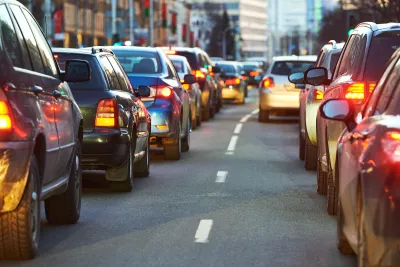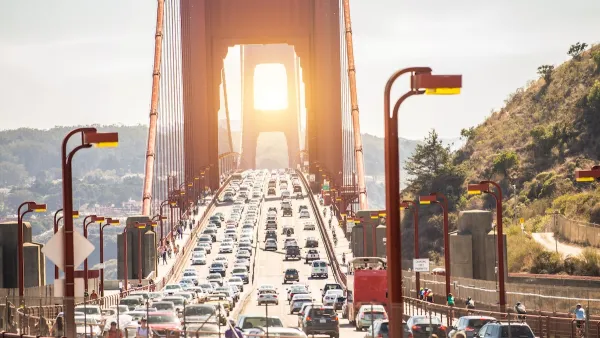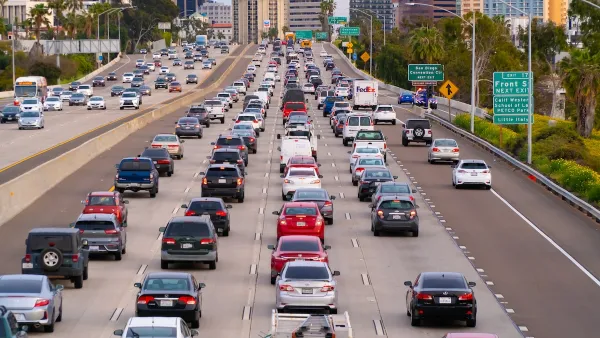Average vehicle miles driven rose in almost every major metropolitan area between 2019 and 2024.

The reduction in driving brought on by the pandemic doesn’t seem to be a lasting effect, writes Linda Poon in Bloomberg CityLab. In fact, between May 2019 and May 2024, total miles traveled (VMT) in the United States grew by 12 percent to the highest level ever recorded, according to a report from StreetLight Data.
The report also suggests that VMT is rising faster now than it was when driving levels first rebounded from the pandemic in 2021 — a worrying trend for advocates working to reform transportation, the largest contributor to US carbon emissions.
VMT grew in almost every U.S. metro area and in most central city neighborhoods, including a 14.7 percent growth in New York City’s core, highlighting the potential benefits of the city’s now-canceled congestion pricing plan.
Across the country, famously car-centric Los Angeles saw a 17 percent decline in average daily VMT. “Other areas among the top five are also in California, including the Oxnard-Thousand Oaks-Ventura area with a 16% decline and the San Francisco Bay Area with a 13% decline — though the study does not dive into potential reasons for the dips.”
Brookings senior fellow Adie Tomer says more work is needed to understand why these changes happen. “Declines in VMT could be a result of deliberate urban planning and infrastructure changes to rein in driving. They could also be a consequence of remote work policies and population shifts, not only away from the metro area but within it.”
FULL STORY: US Driving and Congestion Rates Are Higher Than Ever

National Parks Layoffs Will Cause Communities to Lose Billions
Thousands of essential park workers were laid off this week, just before the busy spring break season.

Retro-silient?: America’s First “Eco-burb,” The Woodlands Turns 50
A master-planned community north of Houston offers lessons on green infrastructure and resilient design, but falls short of its founder’s lofty affordability and walkability goals.

Delivering for America Plan Will Downgrade Mail Service in at Least 49.5 Percent of Zip Codes
Republican and Democrat lawmakers criticize the plan for its disproportionate negative impact on rural communities.

Test News Post 1
This is a summary

Test News Headline 46
Test for the image on the front page.

Balancing Bombs and Butterflies: How the National Guard Protects a Rare Species
The National Guard at Fort Indiantown Gap uses GIS technology and land management strategies to balance military training with conservation efforts, ensuring the survival of the rare eastern regal fritillary butterfly.
Urban Design for Planners 1: Software Tools
This six-course series explores essential urban design concepts using open source software and equips planners with the tools they need to participate fully in the urban design process.
Planning for Universal Design
Learn the tools for implementing Universal Design in planning regulations.
EMC Planning Group, Inc.
Planetizen
Planetizen
Mpact (formerly Rail~Volution)
Great Falls Development Authority, Inc.
HUDs Office of Policy Development and Research
NYU Wagner Graduate School of Public Service





























